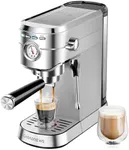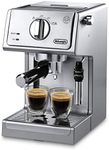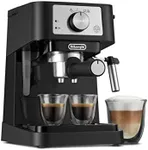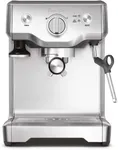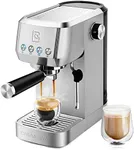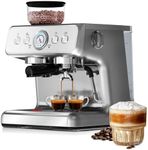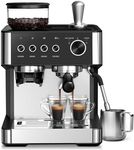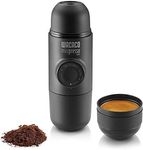Buying Guide for the Best Cheap Espresso Machines
Choosing a cheap espresso machine can be a great way to start making café-style coffee at home without spending a lot. The key is to focus on the features that matter most for your daily use, and to understand what you might be trading off for a lower price. Think about how often you’ll use the machine, how much effort you want to put into making coffee, and what kind of drinks you enjoy. By understanding the main specifications, you can find a machine that fits your needs and helps you enjoy delicious espresso without breaking the bank.Type of MachineEspresso machines come in several types, such as manual, semi-automatic, and automatic. Manual machines require you to do most of the work, like grinding and tamping the coffee, and controlling the water flow. Semi-automatic machines automate some steps but still give you control over the process, while automatic machines handle most of the brewing for you. If you enjoy being hands-on and learning the craft, a manual or semi-automatic might be fun, but if you want convenience and speed, an automatic machine is better. For beginners or those who want quick coffee, semi-automatic or automatic machines are usually the best fit.
PressurePressure, measured in bars, is what forces hot water through the coffee grounds to make espresso. Most machines advertise 9 to 15 bars of pressure. True espresso is made at around 9 bars, so anything in this range is suitable. Machines with much lower pressure may not make real espresso, while those with much higher pressure don’t necessarily make better coffee. For most users, a machine with 9 to 15 bars is ideal, ensuring you get a rich, flavorful shot.
Boiler TypeThe boiler heats the water for brewing. Cheap machines often use a single boiler or a thermoblock system. Single boilers can only do one thing at a time—either brew coffee or steam milk—while thermoblocks heat water quickly and are energy efficient. If you mostly drink straight espresso, either system works. If you want to make milk drinks like lattes or cappuccinos, look for a machine that can switch between brewing and steaming quickly, or one with a thermoblock for faster operation.
Portafilter SizeThe portafilter is the handle that holds the coffee grounds. Standard size is 58mm, but many cheap machines use smaller ones. Larger portafilters allow for more even extraction and better flavor, but smaller ones are easier to use and clean. If you’re just starting out, a smaller portafilter can be less intimidating, but if you want to experiment with your coffee, a standard size gives you more flexibility.
Steam WandA steam wand lets you froth milk for drinks like cappuccinos and lattes. Some cheap machines have basic steam wands, while others have none or use a simple frother. If you love milk-based drinks, make sure the machine has a steam wand. For those who only drink espresso, this feature isn’t as important. If you want to practice latte art or make creamy milk, look for a machine with a proper steam wand, even if it’s basic.
Ease of CleaningEspresso machines need regular cleaning to keep working well and to make good-tasting coffee. Some machines have removable water tanks and drip trays, which make cleaning easier. Others have more parts that need to be washed by hand. If you want a hassle-free experience, look for a machine with simple, removable parts and clear instructions for cleaning. This will save you time and help your machine last longer.
